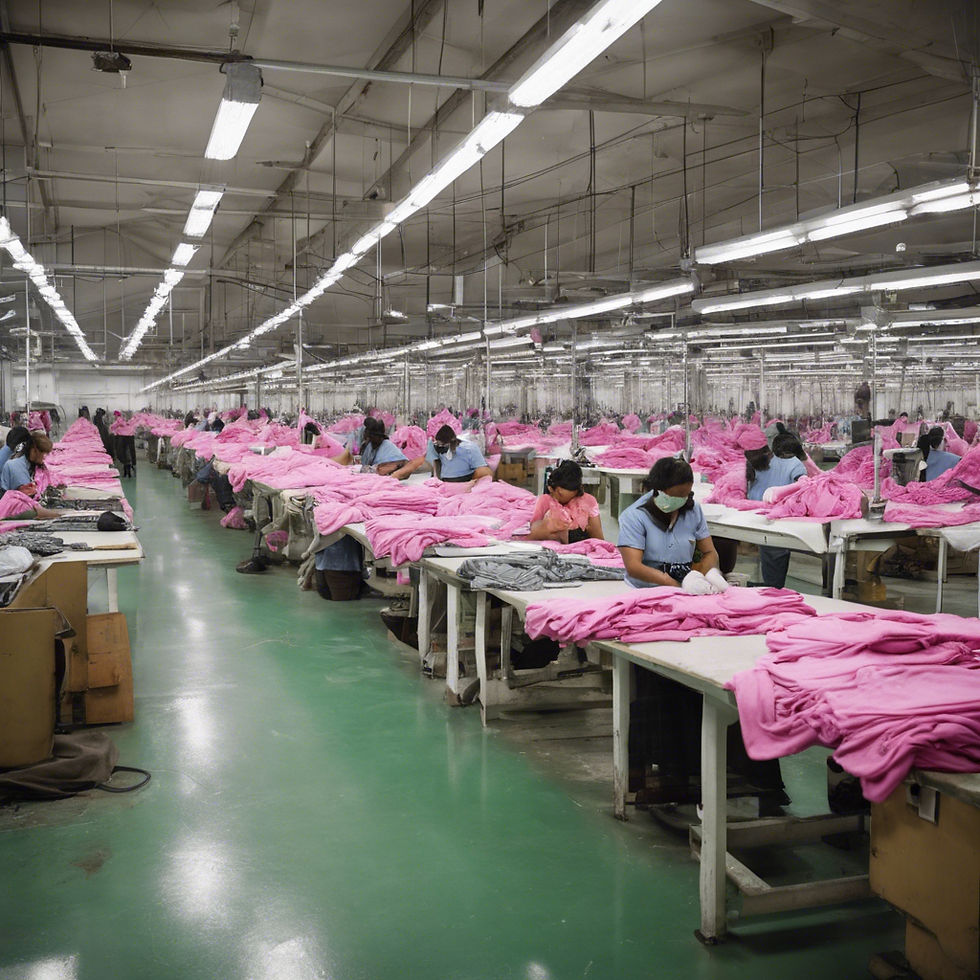
Near-Shoring to Mexico: A Strategic Shift in Global Manufacturing
As per industrial data revealed since 2021, American companies have begun to reassess the risks associated with heavy reliance on Chinese factories. Numerous businesses are opting to shift their production closer to home, specifically to Mexico. This trend, termed "Near-Shoring," has garnered the attention of major global entities, including Walmart.
The Rise of Near-Shoring to Mexico
In early 2022, Walmart decided to source $1 million worth of company uniforms—over 50,000 units—from Preslow, a family-operated apparel business in Mexico, bypassing their traditional Chinese suppliers. This decision signals a pivotal shift in global trade dynamics. The COVID-19 pandemic has radically disrupted shipping channels, catapulting transportation costs and clogging ports, underscoring the dangers of overreliance on a distant nation for crucial goods.
As animosity between Washington and Beijing escalates, multinational companies have begun to question the economic viability of manufacturing products in China. Preslow's acceptance of Walmart's order epitomises Mexico's evolving role in the global supply chain. Companies are now leveraging the shared Pacific border to minimise shipping times—a container from China to the United States typically takes a month, whereas the same shipment from Mexico takes just two weeks.
Geographical Advantages of Near-Shoring
Shipping timelines play a monumental role in this transition. Factories in Mexico can bridge the time gap significantly when compared to China. A company based in San Diego, Zipfox, connects American businesses with Mexican factories. The founder of Zipfox highlighted that customers constantly pressure them for faster deliveries—an advantage that Mexico can readily provide due to basic geography.
This geographical advantage is evident in the trade statistics. Between January and October in the previous year, Mexico exported $382 billion worth of goods to the United States—a notable increase over previous periods. American investments in Mexican enterprises have also soared, as reports indicate.
China remains deeply embedded in global manufacturing; however, the pivot towards Mexico signifies a strategic reallocation of resources. Experts view this shift as a nuanced phase of globalisation focused on regional networks, a step away from complete deglobalisation.
Enhanced Trade Relations and Economic Interdependence
The United States operates within an expansive trade zone comprising itself, Mexico, and Canada. Their supply chains are deeply intertwined. For instance, cars assembled in Mexico often contain parts produced in American factories. Roughly 40% of the value of Mexico's exports to the United States consist of components made in America, a stark contrast to the 4% of American-made components found in imports from China.
Walmart's representative confirmed that the company considers Mexico a viable part of its broader strategy to diversify its supply chain and mitigate regional vulnerabilities. For now, Mexico may lack the extensive capacity to supplant China entirely as the foremost supplier of a wide array of products. Nonetheless, businesses like Preslow are thriving, showcasing the numerous benefits of near-shoring to Mexico.
Challenges and Opportunities in Mexican Manufacturing
At Preslow’s factory, 200 seamstresses work diligently amid the tunes of Mexican folk music. Yet, most of the synthetic fabrics used are still imported from China. Mexico does not yet produce these materials locally. Business owners and decision-makers are aware of this gap; however, they remain optimistic about Mexico's growing role.
Across the border, business owners face similar challenges. A couple, running a small embroidery business, also had to pivot towards Mexican suppliers during the pandemic. They replaced their Asian supplier with Lazzar Uniforms, a family-run company in Guadalajara. Lazzar was able to meet their needs efficiently, demonstrating the growing reliability and potential of Mexican manufacturers.
Prospective Growth and Considerations
While Mexico presents diverse opportunities, inherent challenges need to be addressed for it to become a more formidable manufacturing hub. The country’s president has been criticised for neglecting essential infrastructure, including ports, which remains a vital component for smooth operations.
Even ardent supporters of Mexico’s manufacturing prowess concede the country's limitations. Factories in China still operate on a colossal scale, a standard that Mexico has yet to achieve.
Nevertheless, companies like Botones Loren, producing millions of buttons daily, are experiencing substantial growth as orders shift from China. International brands are drawn to the reliability Mexico offers amid geopolitical uncertainties.
Regional and Global Dynamics
Some industry experts foresee a return to normalcy in global supply chains, potentially diminishing Mexico’s appeal. However, aggressive Chinese discounts and efforts to regain lost ground also play significant roles in this complex equation.
On the contrary, sustained tension between the United States and China could perpetuate the shift toward nearby alternatives like Mexico. Recent tariffs, human rights accusations, and geopolitical alliances further complicate the landscape. Businesses are keenly aware of the need for resilient supply chains.
The Future of Near-Shoring to Mexico
The shift towards near-shoring is fuelled by geopolitical tensions, logistical efficiencies, and a desire for resilient supply chains. Manufacturers and businesses remain optimistic about the potential of Mexico and Central America as viable alternatives to Chinese suppliers. The global manufacturing ecosystem stands on the precipice of transformative change, guided by strategy and adaptability. With increasing openness towards Mexico, businesses are carving a new path forward, shaping the future of global manufacturing.





















Commentaires